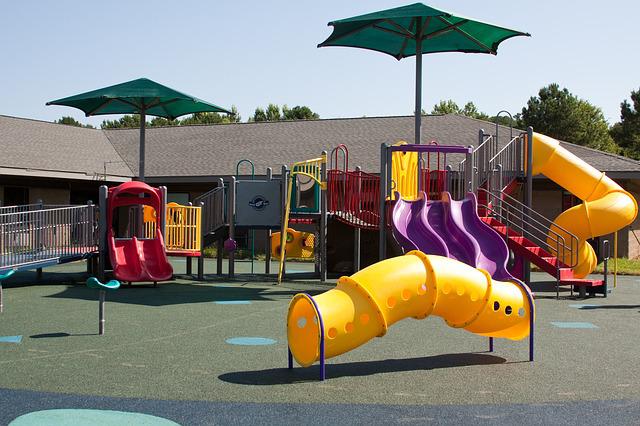
How Schools Can Protect Themselves From Playground Liability Exposures
 Playgrounds are an important part of young children’s educational environment. They allow children to exercise and expel excess energy so they can better focus in the classroom. However, playgrounds are commonly the site of many injuries, ranging in severity from minor to serious. As an educational institution, you need to balance keeping playground facilities safe, while still facilitating important developmental play, and protect the liabilities that you’re exposed to by having a playground on your property.
Playgrounds are an important part of young children’s educational environment. They allow children to exercise and expel excess energy so they can better focus in the classroom. However, playgrounds are commonly the site of many injuries, ranging in severity from minor to serious. As an educational institution, you need to balance keeping playground facilities safe, while still facilitating important developmental play, and protect the liabilities that you’re exposed to by having a playground on your property.
Duty of Care
Some lawsuits related to school playground injury have centered on negligence due to lack of proper supervision. While not practical that a teacher or playground monitor can keep his or her eyes on every single student at every moment the students are on the playground, they are expected to exhibit a reasonable level of adequate supervision. The duty to provide safe play areas and proper supervision should be placed on those responsible for operating playgrounds.
The duty of care owed by a playground operator is the degree of care that a person of ordinary prudence charged with similar duties would exercise in the same circumstances. The law requires the school to exercise the same standard of care toward its students as would a reasonably prudent parent under comparable circumstances. Further, in providing the highest duty of care to students, schools must exercise due care to prevent unreasonable risk of harm to the child from playground equipment and other playground site hazards.
Safe Playground Design
It’s important for children to play on age-appropriate gear so that they do not injure themselves on improperly sized equipment. Playgrounds are ultimately safest when equipment is selected for the age of the children using it. When designing a playground for children of all ages, equipment should be separated into three distinct groups: for children under age 2, for 2- to 5-year-olds, and for 5- to 12-year olds.
Schools must balance keeping playgrounds safe, while still allowing for important developmental play, and protecting the liability that comes with operating a playground.
Other safety considerations that should be taken into account when planning a playground area include the following:
- Items with moving parts—such as seesaws and swings—should be located in a separate area and allow for ample space for the moving parts.
- Minimize the number of spaces that could trap a child’s head, arms or legs. All openings—such as rungs on a ladder—should be either less than 3.5 inches or more than 9 inches.
- Wooden equipment should not be cracked or splintered. Any cracked or splintered equipment requires immediate attention for repair or replacement.
- Any sandbox areas should be inspected regularly before children use them. Be sure that these areas are covered every night to prevent animal contamination.
The selection of safe and age appropriate equipment is just as important as the selection of a safe ground surface for the playground area. Trips, slips and falls will happen and a safe ground surface can reduce the severity of an injury or prevent an injury completely. Concrete, asphalt and blacktop are all extremely hard surfaces and are generally considered unsafe for playground areas. Woodchip ground cover is much softer, but debris hidden in the woodchips, or the woodchips themselves, can cause falls and minor injuries. Rubber mats offer the most stability, especially for younger children, and allows for the easiest wheelchair access. Playground supervisors and maintenance staff should make sure the ground surface stays level and free of debris that could cause kids to trip and fall, such as rocks, tree stumps and tree roots.
Protecting Your Risk
Keep informed of the latest in playground safety developments. One of the most authoritative playground safety standards is published by the U.S. Consumer Product Safety Commission in its Handbook for Public Playground Safety. The handbook contains a wealth of information regarding playground surface and equipment hazards. Any public entity operating a playground is generally expected to be familiar with these standards, as many states have either adopted the handbook or are close to doing so.
General liability insurance generally covers claim costs associated with playground incidents. Having a playground facility does increase your risk. Contact us today to make sure your coverage is adequate and protects your risk sufficiently.
